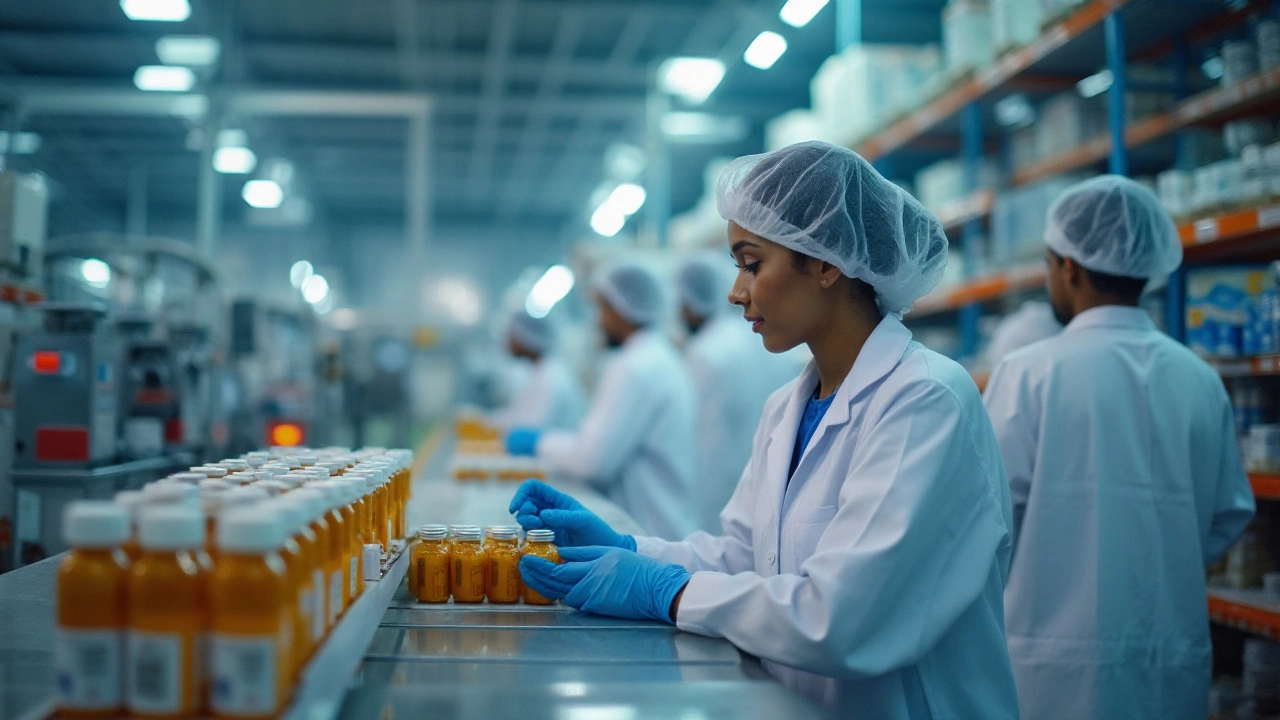Drug Manufacturing in India: What’s Shaping the Industry Today
Did you know India’s drug export value crossed $20 billion last year? That’s a clear sign the sector is moving fast, but fast growth also brings new headaches. Whether you run a small lab or a big plant, understanding the forces at play can save you time, money, and headaches.
Key Trends Driving Change
First off, automation is no longer a buzzword. Robots are now handling tablet compression, coating, and even packaging. The result? Faster cycles and fewer human errors. If you haven’t looked at automation options yet, start with a small pilot line – it’s cheaper than a full overhaul and lets you see real savings.
Second, biologics are stealing the spotlight. More companies are adding biologic‑based drugs to their portfolios because they fetch higher margins. The catch? Biologics need clean‑room environments and stricter temperature control. Investing in modular clean rooms can give you a foothold without building a whole new facility.
Third, the government’s push for “Make in India” is opening up incentives for new plants, especially in Tier‑2 cities where land is cheap. Take advantage of tax breaks and subsidized training programs to lower initial costs.
Finally, data analytics is becoming a daily tool. Real‑time monitoring of batch data helps catch deviations early, cutting waste dramatically. Simple cloud‑based platforms can integrate with existing equipment, so you don’t need a PhD in data science to start.
Challenges and How to Tackle Them
Supply chain hiccups still plague many manufacturers. Raw material delays can stall an entire production run. Mitigate this by qualifying multiple suppliers and keeping a safety stock of critical inputs like APIs and excipients.
Regulatory compliance remains a moving target. The FDA’s recent focus on data integrity means you must have airtight electronic records. A good practice is to run internal audits every quarter and keep all SOPs up to date.
Talent shortage is another pain point. Skilled operators who understand both the chemistry and the machinery are hard to find. Partner with local technical institutes for apprenticeship programs – it builds a pipeline and often comes with government funding.
Cost pressure is relentless, especially with rising energy prices. Energy‑efficient motors and heat‑recovery systems can shave 10‑15% off your utility bills. Even simple steps like regular maintenance of compressors prevent unnecessary spikes.
Lastly, quality issues can damage reputation overnight. Implement a robust quality‑by‑design (QbD) approach: define critical quality attributes early, then design processes to meet them consistently. This proactive stance reduces batch failures and speeds up regulatory approvals.
In a nutshell, drug manufacturing in India is full of opportunity, but success depends on staying ahead of tech trends, tightening supply chains, and keeping compliance tight. Start with one improvement – be it a small automation tweak or a new supplier audit – and watch the impact ripple through your operation. The industry won’t wait, so the sooner you act, the better your chances of thriving.

India's Dominance in the Global Pharmaceutical Industry
India has established itself as a powerhouse in the global pharmaceutical industry, renowned for its generic drug manufacturing and cost-effective production. The country's robust infrastructure, skilled workforce, and innovation in R&D have propelled it to a leadership position. With a significant share of the world’s pharmaceutical production, India continues to thrive amidst global competition. This article explores India's journey to becoming the top contender in the pharma industry.
Read More
Discovering the Manufacturing Locations of Dr. Reddy's Pharmaceuticals
Dr. Reddy's Laboratories is a well-known pharmaceutical company originating from India. Their manufacturing network is extensive, with several strategic locations across the globe. From India to the USA, their facilities uphold rigorous standards to ensure quality medication production. Understanding where these drugs are manufactured can provide insights into the company's global operations and their commitment to accessibility.
Read More